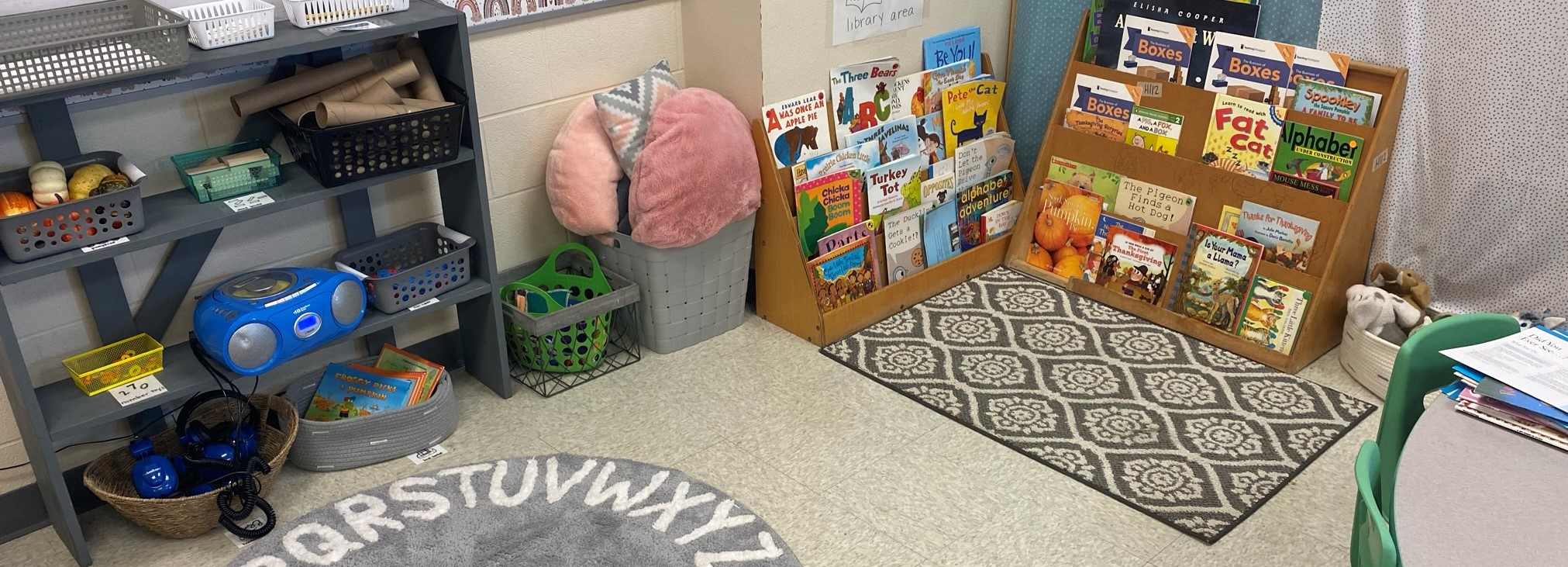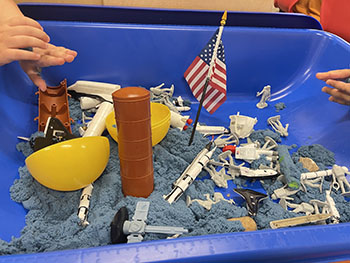Learning Centers in Kindergarten
In alignment with developmentally appropriate practices, the kindergarten classroom should include a minimum of five learning stations and/or centers with a variety of age-appropriate materials in each that are accessible to students regardless of ability or primary language. (Texas Education Agency, n.d.) The physical arrangements in the kindergarten classroom promote the use of both centers and stations (at their designated times) and for their designated purpose. The use of centers and stations will maximize student choice and use student interest to move their learning forward. (Texas Education Agency, n.d.).
Learning stations reinforce literacy and math skills and are used to build a student’s understanding of a topic or theme (Martin, 2019). Learning stations address a particular goal or standard relating to a content area. While the student may choose the station, the activity or outcome in the station is outlined by the teacher. A neurotypical student should be able to complete station activities with little-to-no teacher assistance. Examples of some kindergarten stations include the following:
- Name Activities
- Letter Sorting Games
- Reading Around the Room
- Counting Sets of Objects
- Comparing Numbers
Hands-On Play Centers
Learning centers in kindergarten offer a variety of opportunities for students to engage with each other through varied experiences. The students discover a skill or standard incidentally through exploration of the center of their choosing. The teacher looks for opportunities to engage in play-based learning with the students during their center time. The following centers encourage children to engage in hands-on, meaningful experiences that support developmentally appropriate play:
- Dramatic Play/Pretend and Learn Center: Given appropriate life-like furniture and materials, children are able to learn and pretend play using their own imaginative schema (Theater K.1, K.2, K.3)
- Construction Center: Given a variety of different construction blocks, tiles, vehicles, and tools, children are able to build structures according to instructional themes and imaginative schema (Mathematics K.6, K.7)
- Library/Literacy Center: Given a variety of culturally and linguistically diverse reading materials, children are able to build on their motivation to read, build print awareness and letter knowledge, practice their newly acquired phoneme-grapheme skills, and build overall language development (English/Spanish Language Arts K.2D, K.3, K.4)
- Writing Center: Given a variety of writing tools, children are able to practice fine motor skills and build upon letter and print awareness to continue developing through the writing continuum (English/Spanish Language Arts K.2.E, K.10.B)
- Art/Creativity Center: Given a variety of art materials and tools, children are able to individually create artistic expressions (Art K.2)
- Science/Discovery Center: Given a variety of science and nature materials, children are able to engage in discovery and inquiry about the objects in the world around them (Science K.1)
- Sensory Center: Given access to tactile materials through a water and/or sand table builds children’s learning through sensory experiences.
Cross Content Play
Learning centers may vary in the title or even in the physical placement within the classroom. Ultimately, the goal is to ensure learning center areas integrate a variety of different learning concepts, opportunities and experiences. One concept to consider implementing in the early childhood classroom is cross-area play. This includes bringing materials together from different areas to spark creativity and encourage children’s imaginations. In essence, cross-area play is rooted in the idea that children should be given the freedom to experiment with materials in open-ended ways.
Given structure, patience and flexibility, cross-area play can be successfully implemented through the teaching of routines, procedures, and expectations. Some suggestions are as follows:
- Model and share ideas about using a variety of available tools aligned to the lesson/theme: “What a good idea it would be to wear our safety helmet and vest when building our [block] zoo”; “Perhaps we can use our magnifying glasses to investigate the leaves we glued on our nature collages.”
- Model and remind children of the expectations of “cleaning up” through the use of visual aids and supports (e.g., labeled bins and visual schedules) that promote organization of all items used out of their ‘living’ center: “Remember our toys need to go back to their homes.”
- Use cross-area play as an opportunity to teach responsibility and respect when using classroom community items: “We all take care of our materials so we can continue to share and play with them another day.”
The Role of the Classroom Teacher During Learning Centers
During the center time, the teacher can serve as a guide, an arbitrator should conflict arise, a participant, or an observer. The teacher can visit each center and engage in conversations with students to probe for learning that may be occurring during this time. The teacher can make nondirective statements, ask closed or open-ended questions, make statements that don’t require a response, and collect assessment data in the form of artifacts or pictures (Hamand, 2019).
As children engage in centers, the teacher can instruct through the scaffold of play. During this time, the teacher can teach vocabulary, math, literacy, and other content skills through role-play depending on the context of the center. The teacher can also use this time to plan for future instruction based on the observations that are made.
*These centers may be divided into smaller centers depending on the physical space that is available and conducive to learning.
Resources
Texas Education Agency Early Childhood Education Division (n.d.). 2022-2023 Early Childhood Program Self-Assessment Kindergarten. Texas Education Agency. Retrieved January 3, 2023, from https://tea.texas.gov/academics/early-childhood-education/kinder-self-assessment.pdf.
Martin, K. (2019, May 17). What Is the Difference Between Learning Centers and Stations in a Class? The Classroom. Retrieved January 3, 2023, from https://www.theclassroom.com/importance-learning-resource-centers-8241329.html





